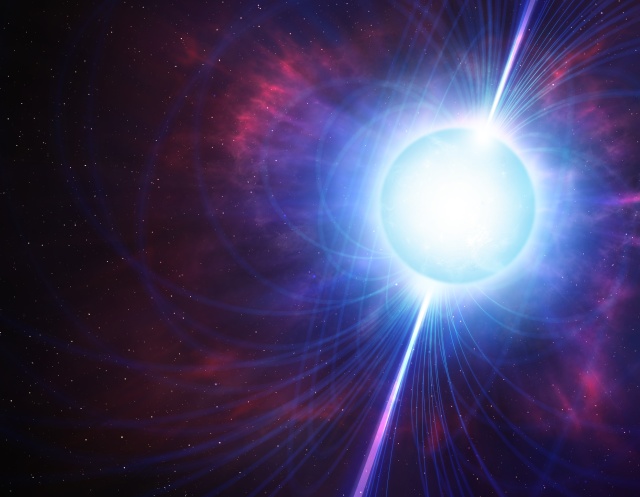
MARK GARLICK/SCIENCE PHOTO LIBRARY via Getty Images
Fast radio bursts in the cosmos might not be quite so mysterious before long. Astronomers have detected the first known burst coming from within the Milky Way galaxy. It originated with the SGR 1935+2154 magnetar (a neutron star surrounded by intense magnetic fields) about 32,616 light-years away. That may sound distant,but it’s a lot closer than the next-closet magnetar,spotted about 490 million light-years away in another galaxy.
The burst was spotted in late April through a mix of satellite observations and on-the-ground radio telescope observations,including NASA’s orbiting Neil Gehrels Swift Observatory,the Canadian Hydrogen Intensity Mapping Experiment (CHIME) radio telescope in Canada and the US-based STARE2 telescope.
The discovery could shed much more light on the nature of the bursts. This burst’s proximity to Earth made it possible to detect bursts in other wavelengths,like X-rays,that weren’t practical with more distant examples. It might be possible to determine the cause,whether it’s the product of the magnetic fields themselves or something inside the star.
Don’t expect this to solve every riddle around fast radio bursts. It’s still not certain why some bursts are more energetic than others (the nearby instance was about 1,000 times weaker than usual),and others erupt in patterns that don’t necessarily line up with what you’d get from a magnetar. Nonetheless,this ‘local’ event might answer many questions about the bursts and what they say about the universe,such as the distribution of matter.











 加载中,请稍侯......
加载中,请稍侯......
Comments